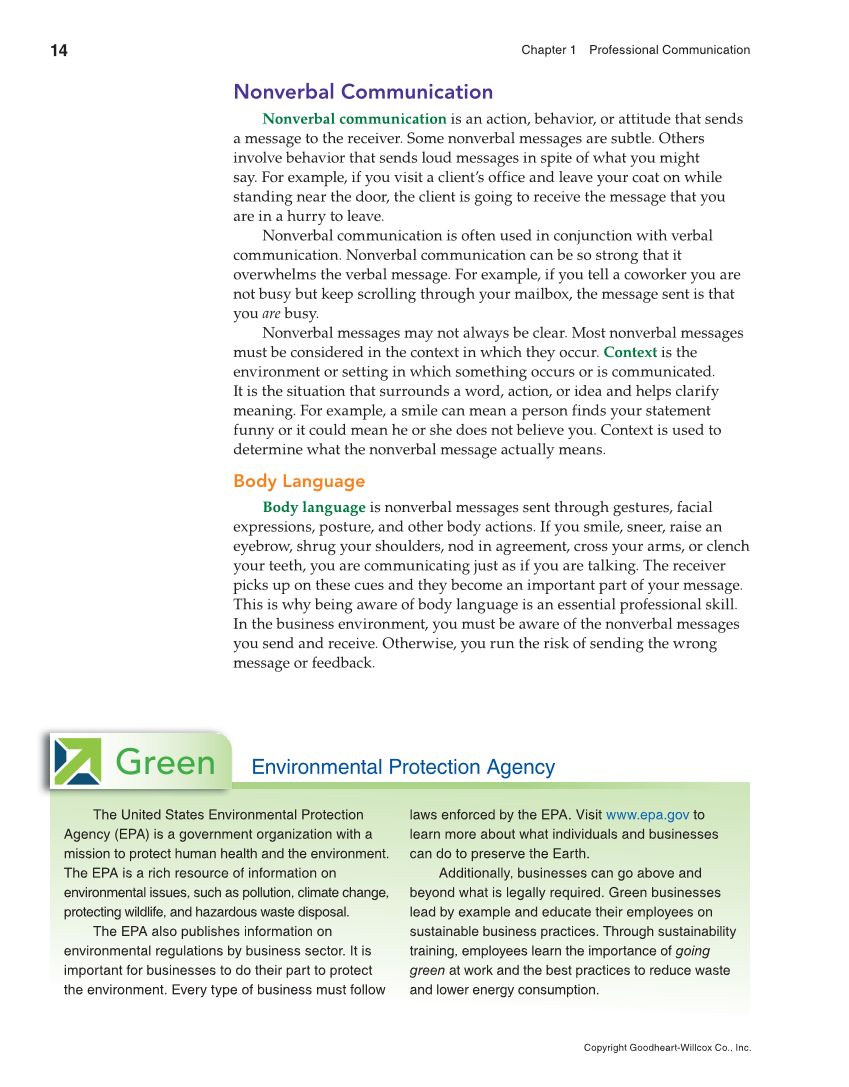14 Copyright Goodheart-Willcox Co., Inc. Chapter 1 Professional Communication Nonverbal Communication Nonverbal communication is an action, behavior, or attitude that sends a message to the receiver. Some nonverbal messages are subtle. Others involve behavior that sends loud messages in spite of what you might say. For example, if you visit a client’s office and leave your coat on while standing near the door, the client is going to receive the message that you are in a hurry to leave. Nonverbal communication is often used in conjunction with verbal communication. Nonverbal communication can be so strong that it overwhelms the verbal message. For example, if you tell a coworker you are not busy but keep scrolling through your mailbox, the message sent is that you are busy. Nonverbal messages may not always be clear. Most nonverbal messages must be considered in the context in which they occur. Context is the environment or setting in which something occurs or is communicated. It is the situation that surrounds a word, action, or idea and helps clarify meaning. For example, a smile can mean a person finds your statement funny or it could mean he or she does not believe you. Context is used to determine what the nonverbal message actually means. Body Language Body language is nonverbal messages sent through gestures, facial expressions, posture, and other body actions. If you smile, sneer, raise an eyebrow, shrug your shoulders, nod in agreement, cross your arms, or clench your teeth, you are communicating just as if you are talking. The receiver picks up on these cues and they become an important part of your message. This is why being aware of body language is an essential professional skill. In the business environment, you must be aware of the nonverbal messages you send and receive. Otherwise, you run the risk of sending the wrong message or feedback. The United States Environmental Protection Agency (EPA) is a government organization with a mission to protect human health and the environment. The EPA is a rich resource of information on environmental issues, such as pollution, climate change, protecting wildlife, and hazardous waste disposal. The EPA also publishes information on environmental regulations by business sector. It is important for businesses to do their part to protect the environment. Every type of business must follow laws enforced by the EPA. Visit www.epa.gov to learn more about what individuals and businesses can do to preserve the Earth. Additionally, businesses can go above and beyond what is legally required. Green businesses lead by example and educate their employees on sustainable business practices. Through sustainability training, employees learn the importance of going green at work and the best practices to reduce waste and lower energy consumption. Green Environmental Protection Agency
